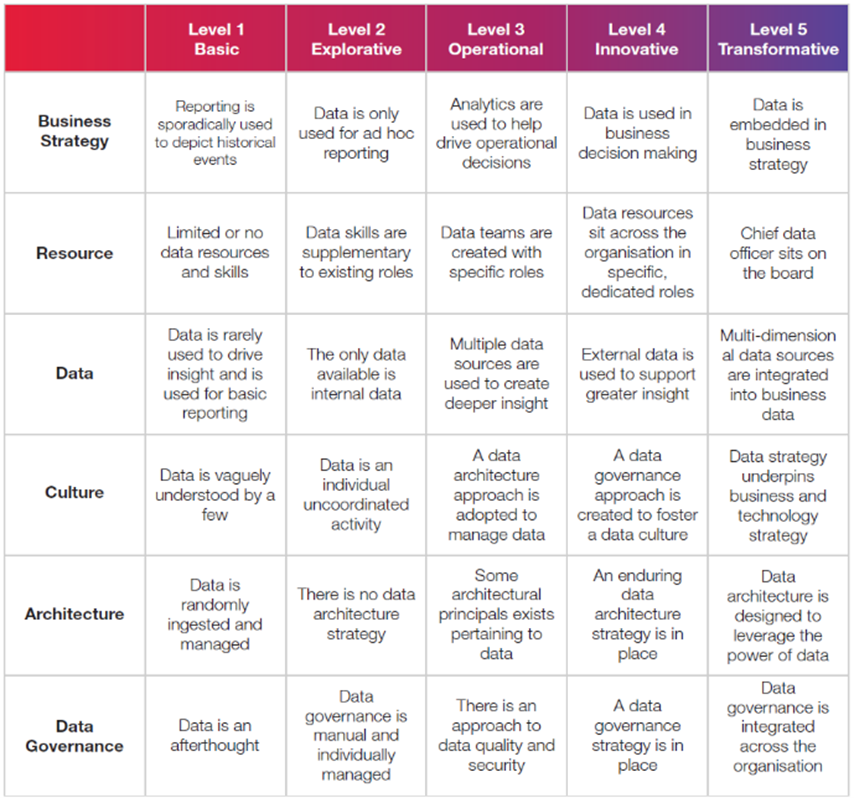The exponential explosion of data created by every action we take in our modern world can be overwhelming, and often leaves organisations in the same predicament: how can you understand and leverage all your disparate and complex data to improve your business?
The proliferation of data strategy alignment to business and technology strategies, as well as multi-faceted data management and governance approaches has created a preconception that whole departments with niche skills are required to control your data. Furthermore, this often leads to unrelenting pressure on data leaders, and sometimes data strategies that fail before they even get going.
The biggest challenge is identifying the right data to achieve your goals, and controlling and managing that data with a strategy which targets value-based data, rather than paying for vast amounts of unwanted, unused and expensive data that does not provide value.
But realistically, defining a data strategy doesn’t need to be expensive or complex. If you start small, a data-centric approach to business is a lot closer than you think!
1. Secure executive sponsorship
The success of any transformational change is rooted in organisational and cultural acceptance. Only when your organisation embraces the importance of data will you start to achieve your strategic outcomes.
This relies upon a data-centric approach to strategic decision making at the highest level, with leadership from an appointed data champion who is supported by a multi-level, cross-organisational team committed to managing and maintaining data governance and management.
Critically, in the early stages of defining your strategy, this does not require significant resources. In fact, the commitment of a select few across your organisation can help to define the maturity level of your data capability. However, those involved will need to be afforded the time, space and backing to successfully build the strategy.
2. Define your baseline
Underpinning any data strategy should be an analysis and definition of the organisation’s existing data landscape. This is achieved through an honest and holistic assessment of the people, processes and technologies that create, manage and maintain your data. This is important given that data is much more than simple rows and columns in a spreadsheet, or ever-increasing databases in a warehouse.
Broader than raw numbers, data is defined by the people that generate it, the processes and applications that create it, and the technology that stores and maintains it, all of which make up the critical components of the initial assessment.
The key is to tell the story of “how, what, where and why” around your existing data capability, to create a complete understanding of the data governance and management that underpins your future data strategy. This baseline view provides a starting point for data transformation. It enables you to:
- Create goals and objectives for benefits management, grounded in your current capability.
- Analyse outcomes realisation.
- Manage and track future data from a tangible starting point.
- Capture, track and monetise real-world improvements.
All of which provides tangible evidence and confidence that your data strategy is delivering on its promise to inform, accelerate and create benefits for your organisation.
Also important is that your organisation’s data strategy does not sit in isolation. In fact, the key driver for this is close collaboration with business and technology strategies, because at the highest level, a data strategy should set out to underpin, support and help deliver the critical questions your organisation is trying to answer. Once defined, your outcomes and objectives are delivered by leveraging data.
3. Set achievable objectives
One of the biggest challenges facing data leaders is the need to justify the commitment of resources to a data strategy. Typically, this is due to a preconceived notion that data governance and management is a complex, expensive endeavour, and so the business justification should be clearly defined in your strategy.
By outlining achievable, sustainable and measurable objectives to be achieved through the effective use of data, you will more likely harness the wider organisational support you need. Ideally, your strategic objectives should combine tactical and longer-term deliverables revolving around your wider organisational goals. These might include:
Identifying an outcomes-based roadmap specific to your organisation will thereby enable you to create a phased, controlled and measurable delivery plan that underpins your data strategy, helping you to deliver against the set objectives you have defined.
We're here to help
CGI’s Data Advisory team partners with organisations to help guide, support and drive effective data strategies. Our experts have experience across all aspects of data maturity; whether that is defining current business processes and aligning a new data component, or mapping disparate data sources to a common architecture, we will create a maturity assessment that fits the needs of your organisation. Our approach to data maturity is highlighted in this diagram.
Our tried and tested method for transformational data strategies will drive your specific strategic objectives, and using our collaboration approach, we will bolster organisational and cultural commitment from senior to employee level.
If you’d like to find out more about what a data transformation partnership with CGI might look like, take a look at our data journey brochure or please reach out to me.









